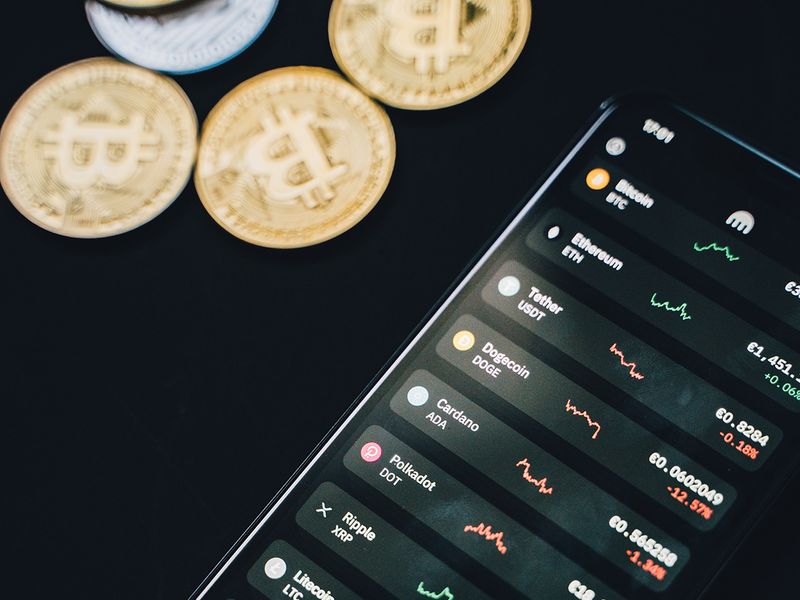Crypto Lending: Unregulated crypto-backed loans get popular, but not without risks

Dubai: While it is already known that cryptocurrency is becoming even more popular as an investment, it is evidently gaining traction globally as a mode of payment too albeit not without factoring related risks.
Crypto lending refers to a type of DeFi, or decentralised finance, which allows investors to lend their cryptocurrencies to different borrowers, getting interest payments in exchange as crypto dividends.
(Decentralised finance commonly refers to unregulated cryptocurrency platforms that allow lenders and borrowers to transact without the traditional gatekeepers of loans: banks.)
Many platforms that specialise in lending crypto also accept stablecoins, on top of cryptocurrencies. (Stablecoins are cryptocurrencies that aim to offer price stability and are backed by a reserve asset.)
Is it safe to use such sites? Heres why its not recommended by crypto experts
However, with high rewards comes high risk. Lawyers and analysts say such sites are vulnerable to coding bugs and hacks, and most are untested at scale and unregulated.
Being unregulated is typical of much of a global cryptocurrency sector that is mistrustful of the financial establishment.
Several critics warn of DeFi still being in an experimental stage in the field of finance. They’re not necessarily legally compliant, but that doesn’t mean that they can’t be at some point in the future.
DeFi nonetheless surges in popularity
While DeFi’s roots are in a crypto sector hostile to mainstream finance, some of its aims like cutting costly steps and paperwork in financing have caught the attention of the firms it seeks to undermine.
Supporters say, in the future, bonds or stocks will be issued and traded directly on blockchain-based platforms instead of by investment banks or centralised exchanges, with code overseeing the processes.
For their part, major banks are looking at how such technology can be used to complement, rather than upend, established finance.
Global investment bank Goldman Sachs, for example, has hired a new head of digital assets to look at how assets can exist on blockchain technology.

How does a blockchain work?
The blockchain is distributed across an entire network of computer systems. It is digitally distributed instead of copied or transferred, creating an irreversible record.
Each block in the chain contains a number of transactions, and every time a new transaction occurs on the blockchain, a record of that transaction is added to every participants ledger.
So essentially, blockchains are shared databases. Each party on a blockchain has access to the entire database and its complete history. No single party controls the data or information.
Why is crypto lending now preferred over holding crypto?
Investors are often told to hold their assets until the price of the currency they have bought appreciated in value. But with crypto lending, you may not prefer leaving your currency in your wallet.
This is when you start thinking of ways to help grow your digital currency, and one of the ways you can do that is through crypto lending.
Heres an example of how this works. Lets say you possess a certain number of cryptocurrencies and you deposit them into a crypto lending platform wallet.
As such, every month or week, you will receive interest. The interest rates can differ. They can either go from 3 per cent to 7 per cent, or they can sometimes go even higher.
When it comes to crypto lending, borrowers also have the chance to stake their cryptocurrency as guarantees of loan repayment or as security.
Thus, the investors will be able to sell the crypto assets in case the borrower doesnt pay off the loan anymore, meaning that they can recover the losses.
Platforms can recover their losses most times though because they ask borrowers to stake 25 per cent to 50 per cent of the loan in crypto. This can come in handy since borrowers might not pay off the loans.
However, experts advise to keep in mind that the key downside is that if prices fall, then you may have to pledge more, particularly given that it is not a normal, stable asset that youre using to borrow.
How does crypto lending work? Heres a four-step walkthrough
2. In order for the borrower to do so, like any other loan, he or she puts up his or her crypto as collateral as soon as the loan request is accepted by the platform.
3. Until the borrower is able to fund back the entire loan, the borrower will not have the opportunity to get back the collateral.
4. Using the platform, the lenders will automatically fund the loan. Investors will receive regular interests as payments till his or her cryptocurrencies are returned.

What are the risks associated with crypto lending? Here are five top risks
1. Risk of crypto fluctuation
A key concern that analysts cite when it comes to in crypto lending is cryptocurrencys market fluctuation, primarily as cryptocurrencies are highly susceptible to price volatilities.
This unsteady valuation can lead to a lower value on return. Lets assume you lent one Bitcoin (BTC) when the price was $60,000 (Dh220,380).
If the loan is held up to the point where Bitcoin dropped to $42,000 (Dh154,266), and then the loan is paid back as one Bitcoin, the value of what you gave out has fallen.
2. Risk of platform insolvency
When a lender normally deposits money with a bank for loan purposes, the overall risk of losing all the money is very low, and the lender is assured of some compensation even if the bank goes insolvent.
In crypto lending, deposits are not insured like it is for bank loans, and you might lose all your money if the platform provider goes insolvent. When this happens, you are treated as a creditor in the insolvency.
3. Risk of cybersecurity breaches
Cyber-attacks and security breaches are not new to cryptocurrencies, and so with crypto lending platforms it is not different.
Although there have been cyber-attacks on crypto lending platforms, there has hardly been loss of actual cryptocurrencies, only private data.
Since DeFi crypto lending platforms do not hold your assets or offer any insurance, you manage your cryptocurrencies in your own wallet that you connect to the online platform.
4. Risk of handling smart contracts
Smart contracts, are not legally binding contracts, as the name implies. Smart contracts are simply programs stored on a blockchain that governs the execution of actions when pre-set conditions are met.
In the case of crypto lending, smart contracts are used to automate crypto lending processes. They regulate what happens with your crypto when interest payments or collateral liquidations are taken.
Since developers design the software codes of these lending programs, they may contain security or functionality flaws that seriously cost investors.
5. Unclear cryptocurrency lending regulations
Cryptocurrency regulations are not as advanced as the technology itself, resulting in a lack of investors confidence in any crypto lending product. If your assets disappear, you cannot take legal action.
Crypto experts agree that when governments worldwide start paying direct attention to this new market, its impossible to predict how positively or negatively laws would affect investors funds.

How to factor in risks of crypto lending?
Be aware of your crypto price volatility and plan your investments in crypto wisely. Follow financial markets to find information that can lead to a fall in crypto prices.
With DeFi, you may want to stick with popular platforms with a large community to prove it. Research the liquidity and insolvency track records of any crypto-based lending platform you choose to invest.
The risk of your platform going insolvent is minimal with most lenders, so investing with them is safer in this regard. Either way risking only a portion of your crypto holdings is safer than going all in.
Experts advise you to understand the extent of the platforms assets security insurances. So do your own research and invest with only credible crypto lenders (or crypto exchanges that offer lending services) with large markets or liquidity.
If you dont handle your assets safekeeping, they might get stolen or you may get locked out. As mentioned earlier, Smart contracts can have technical flaws which might temporarily affect the platforms lending protocol.
Most smart contracts on crypto lending platforms are publicly available, and you can check to study the protocols if you have the technical knowledge. Otherwise, do your research and evaluate the platforms communitys trust in their smart contracts before investing.
Key takeaways: Checklist when looking at crypto lending platforms
To borrow cryptocurrency, you have to make sure you choose the right platform. There are many platforms out there that are letting you borrow crypto, but you need to research until you find a trustworthy one. So, while making sure a platform is safe and legit, proceed to borrow a loan.
Once you find a reliable platform, you need to look at whether you can borrow the type of cryptocurrency you want to lend. Not every platform will have all cryptocurrencies available. Also, you need to find out the yearly returns on the cryptocurrency you want to lend.
Taking out a crypto loan is very easy compared to traditional loans. You will get a loan amount depending on how much collateral you can use. The loan-to-value (LTV) ratio refers to the amount of the loan in relation to the collaterals value.
That being said, if you put up, for instance, Dh10,000 in cryptocurrencies as collateral and the loan you receive is Dh5,000, the LTV ratio is 50 per cent. Crypto loans usually come with very low LTV ratios due to the volatility of the crypto markets.
You can lend your cryptocurrency and earn interest in return, which is what makes this practice valued. Think of it as using a savings account. With a savings account, you stash the money while the bank pays certain interest on the balance. This way, it can use the money to issue loans to other people in return.
To lend your cryptocurrency, again, you have to find a trustworthy platform for this. You then need to find an exchange that is flexible. After that you would want to determine the coins you want to lend. But this is detrimental of the market, as well as the returns you target and how well you tolerate risk.
Once you give a crypto loan, you will stake your crypto collateral and then wait for investors to fund the loan. The investors will receive interest, and once the loan is paid back by the borrower, the crypto collateral is returned.



